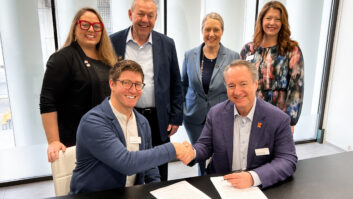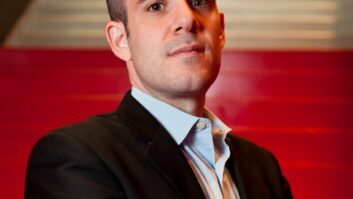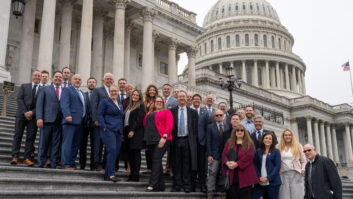
Dave Evans has adjusted his numbers. The former Cisco futurist, Stringify co-founder, and CEDIA 2017 keynote speaker is now predicting that we will see 40 billion things connected to the internet by 2020. That’s down a bit from his prediction of 50 billion that he shared at CEDIA 2016, but for Evans, it’s not about raw numbers.
It’s about the types of things that are being—and will be—connected.
“A decade or so back, if I had said, ‘I want to connect my shoes, or my toothbrush, or my front door lock to the internet,’ people would have laughed because it would have just made no sense—it would have been expensive, my shoes would have cost a thousand dollars, or whatever,” Evans said.

Dave Evans, co-founder and CTO of Stringify
Today? The average consumer is surrounded by a wealth of intelligent devices, and they will need assistance sorting through their options.
“Traditional control systems are being augmented now with IoT devices, like door locks, and thermostats, voice control, connected light bulbs, and so on,” Evans added. “So, all of a sudden, from a CEDIA perspective, their world, their opportunity has grown exponentially.”
Let’s dig into two of the topics Evans will likely touch upon as the IoT becomes the IoIT, the Internet of Intelligent Things: How we protect our networks, and what we eat.
Operator Error
“To me, security and privacy are two sides of the same coin. If you erode one of them, you compromise the other one,” Evans continued.
He noted that people often blame technology for their lack of security, but that’s a bit unfair.
“It’s akin to someone leaving their home and leaving their front door unlocked,” he explained. That’s precisely what happened in a huge DDOS attack in late 2016, and cameras-turned-culprits were responsibly for a lot of the requests that overloaded servers.
“All of these cameras were hacked, and it was a big IoT botnet attack,” Evans said. And, the cameras were vulnerable because their default passwords were left unchanged: “They left it, ‘User Name: Admin, Password: Password.’”
“So part of [the solution] is education, but part of it is also that we’ve got to be all accountable, all responsible,” he said. “And, I think therein lies the opportunity for CEDIA, because the average consumer doesn’t know what to do, but they want security.”
Feed the World?
A fundamental example of how IoT can solve the big, pressing problem of how we are going to feed ourselves in the future. Evans noted that currently the U.S. population adds another hungry mouth every 14 seconds. And he further brings the dire news that more than 80 percent of the land that is suitable for farming is already being used.
“Land is in short supply and, yet, we have to double food production over the next three decades to feed all these people we’re adding,” he said. “It was about 20,000 years ago when humans began to farm. One can make an argument that for 99.9 percent of agricultural history, it simply didn’t change.”
Today, though, agriculture is about to undergo an enormous shift. Because agriculture, like any other industry, is subject to the universal laws of technological growth, the IoT is about to improve our food supply in incredible ways.
“We’re seeing the merging of plant life with electronics where plants literally have electronics embedded in them as they grow, and plants can actually say, ‘Look, I need more water. I need more fertilizer. I need more pesticide.’ And connected sensors and connected devices allow us to do that. Long story short: The population is growing fast, land is shrinking, climate is changing, we need to grow a lot of food; IoT is the answer.”
And if IoT can solve problems on the scale that Evans is suggesting, just imagine what it will soon do for the kitchen in your home. Example: Forget use-by dates when sensors can tell you that your yogurt’s truly a goner.
“There’s so much opportunity, and those individuals and companies that can really make a mark can take advantage of a massive sea change coming into the home automation space,” he concluded. “What did Lincoln say? ‘The best way to predict the future is to create it.’”
More About Dave Evans
Dave Evans, co-founder and CTO of Stringify and former chief futurist for Cisco (where he coined the term “The Internet of Everything”), will share his insights on how these technology advances will open up vast new opportunities for tech integrators. Evans holds numerous patents in the fields of connected cars, networking technologies, virtual people, IoT, and more. You won’t want to miss this engaging and thought-provoking presentation.
The Internet of Intelligent Things
San Diego Convention Center, Ballroom 20A
Wednesday, September 6, 2017
5:30 p.m. – 6:30 p.m.
Free to all CEDIA 2017 attendees







